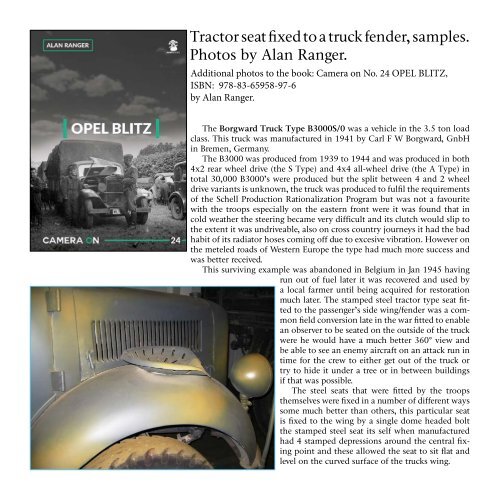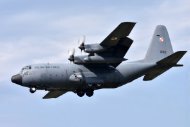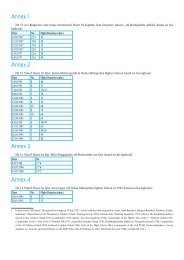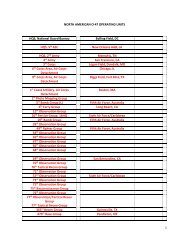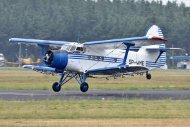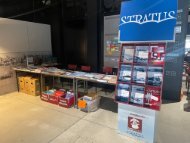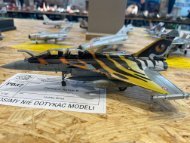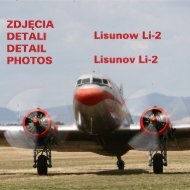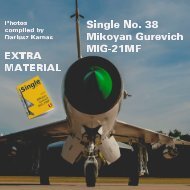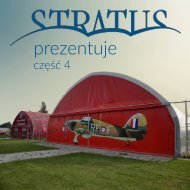Fender seats
Fender seats on Opel Blitz.
Fender seats on Opel Blitz.
- TAGS
- fender
Create successful ePaper yourself
Turn your PDF publications into a flip-book with our unique Google optimized e-Paper software.
Tractor seat fixed to a truck fender, samples.<br />
Photos by Alan Ranger.<br />
Additional photos to the book: Camera on No. 24 OPEL BLITZ,<br />
ISBN: 978-83-65958-97-6<br />
by Alan Ranger.<br />
The Borgward Truck Type B3000S/0 was a vehicle in the 3.5 ton load<br />
class. This truck was manufactured in 1941 by Carl F W Borgward, GnbH<br />
in Bremen, Germany.<br />
The B3000 was produced from 1939 to 1944 and was produced in both<br />
4x2 rear wheel drive (the S Type) and 4x4 all-wheel drive (the A Type) in<br />
total 30,000 B3000’s were produced but the split between 4 and 2 wheel<br />
drive variants is unknown, the truck was produced to fulfil the requirements<br />
of the Schell Production Rationalization Program but was not a favourite<br />
with the troops especially on the eastern front were it was found that in<br />
cold weather the steering became very difficult and its clutch would slip to<br />
the extent it was undriveable, also on cross country journeys it had the bad<br />
habit of its radiator hoses coming off due to excesive vibration. However on<br />
the meteled roads of Western Europe the type had much more success and<br />
was better received.<br />
This surviving example was abandoned in Belgium in Jan 1945 having<br />
run out of fuel later it was recovered and used by<br />
a local farmer until being acquired for restoration<br />
much later. The stamped steel tractor type seat fitted<br />
to the passenger’s side wing/fender was a common<br />
field conversion late in the war fitted to enable<br />
an observer to be seated on the outside of the truck<br />
were he would have a much better 360° view and<br />
be able to see an enemy aircraft on an attack run in<br />
time for the crew to either get out of the truck or<br />
try to hide it under a tree or in between buildings<br />
if that was possible.<br />
The steel <strong>seats</strong> that were fitted by the troops<br />
themselves were fixed in a number of different ways<br />
some much better than others, this particular seat<br />
is fixed to the wing by a single dome headed bolt<br />
the stamped steel seat its self when manufactured<br />
had 4 stamped depressions around the central fixing<br />
point and these allowed the seat to sit flat and<br />
level on the curved surface of the trucks wing.
The Borgward Truck Type<br />
B3000S/0 The stamped steel seat<br />
seen from above and clearly showing<br />
its fixing points and the 4<br />
stamped depressions that became<br />
the means by which the seat was<br />
levelled on the curved surface of<br />
the trucks wing.
The Borgward Truck Type<br />
B3000S/0, Passengers side wing<br />
seat from the front, note the<br />
head lamp fitting and the width<br />
indicator pole attachment that of<br />
a welded section of tube that the<br />
indicator is slotted into and that<br />
the stamped steel seat is fixed at<br />
an angle however I remember that<br />
I could move the seat around a bit<br />
when I took the shot so this angle<br />
is unlikely to have been as used in<br />
service, lastly note the dome headed<br />
fixing bolt in the centre of the 4<br />
stamped depressions that form feet<br />
to level the seat on the wing
The Borgward Truck Type B3000S/0, Passengers side wing seat from the front right, note the head lamp fitting and the width indicator pole.
The Opel Blitz 3,6 “S” was<br />
a vehicle in the 3.5 ton load<br />
class. This truck was manufactured<br />
in 1943 by Opel Automotive<br />
a division of the American<br />
GM Corporation in Opel’s<br />
Brandenburg plant Germany.<br />
The Opel Blitz was produced<br />
from 1937 and onwards in various<br />
forms well in to the 1950,s,<br />
the Opel Blitz 3.6 was produced<br />
in both 4x2 rear wheel drive (the<br />
S Type) and 4x4 all-wheel drive<br />
(the A Type) and whilst precise<br />
production figures are unknown<br />
it was by far the most produced<br />
truck variant of any of the AXIS<br />
powers during World War 2, the<br />
basic Opel original 3ton spec<br />
was easily able to fulfil the requirements<br />
of the Schell Production<br />
Rationalization Program<br />
and with only a few additions<br />
to militarize the truck, both the<br />
civilian and military types were<br />
much the same. The Opel Blitz 3,6 was very well appreciated by the troops on all theatres of operation and was acclaimed<br />
as the best of the AXIS produced transport vehicals in any class, indeed Opel’s were renowned for their ability<br />
to start in the cold much easier than any other type.<br />
This surviving example is a very rare example indeed, it is actually a truck built on an extended chassis of a 3.6<br />
ton originally produced for busses, Opel produced the chassis, power train and running gear whilst the bus body was<br />
produced by a third party coach works. However as from 1943 by government decree only production of trucks was to<br />
continue to the detriment of all other types the few remaining unfinished buss chasses that remained in Opel’s works<br />
were finished off by Opel as trucks but making use of their extended chassis the load bed was extended as well and<br />
whilst one might think that this was a good thing in practice it only led to encourage the transport strapped Wehrmacht<br />
to over load them and thus reduce their life in service, this example is the only survivor of what must have been<br />
a very limited quantity produced in the first place. As with the Borgward it was also abandoned in Belgium in 1945<br />
and use by locals until acquired for restoration in the late 1960’s<br />
The stamped steel seat on this Opel is of much better construction than that seen on the Borgward but as always<br />
it was an addition both produced and added to the truck by the unit whose troops operated the truck in service. The<br />
seat has had a back frame welded to it that once had a padded back rest attached, it’s two hole fixing location is still<br />
visible, the seat itself is welded to a pole that is in turn welded to a triangular base plate that has been bolted on to the<br />
trucks steel wing/fender.
A closer view of the seat from the side with a better view of the triangle base plate mounted to the wing.
The Opel Blitz 3,6 “S” wing/fender seat seen from behind showing detail of the back rest mount and its welded construction.
The Opel Blitz 3,6 “S” wing/<br />
fender seat seen from below and<br />
behind showing the seat mounting<br />
pole has been welded to a<br />
circular mounting pad that has in<br />
turn been welded to the stamped<br />
steel seat.
The Opel Blitz 3,6 “S” wing/<br />
fender seat seen from below and<br />
behind showing the seat back<br />
support section attachment weld<br />
to the stamped steel seat and the<br />
“T” shaped back rest support.
The Opel Blitz 3,6 “S” wing/<br />
fender seat seen from above and<br />
in front, showing us the stamped<br />
steel seat to good effect and<br />
the weld marks of the circular<br />
mounting plate under the steel<br />
seat, and seen very clearly here<br />
are the two mounting holes in<br />
the back support “T” for attaching<br />
a padded back rest to.


